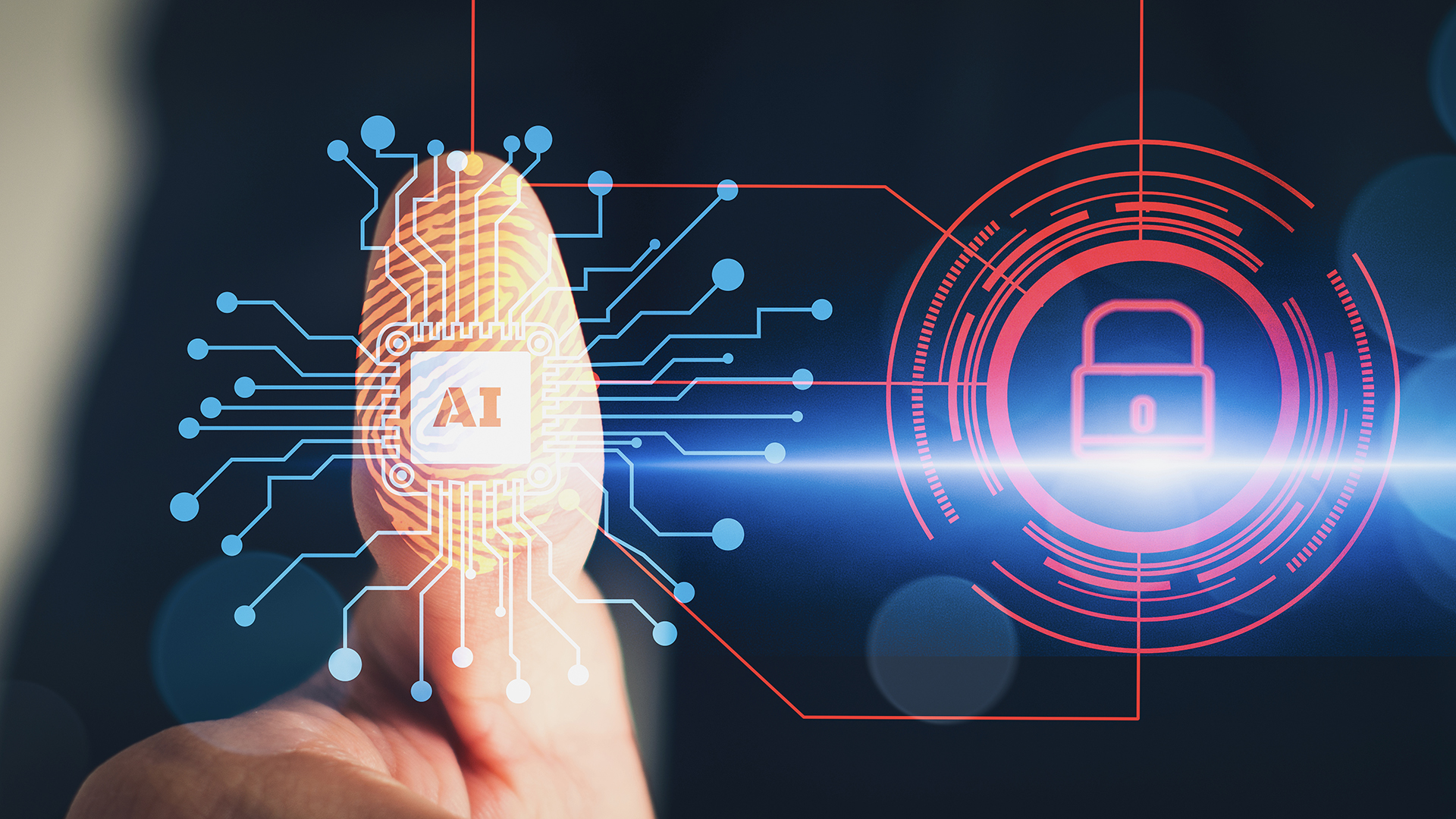Innovation News Network delves into the intricate labyrinth of cyber security threats which have emerged as potent challenges in this digitised era.
An invisible battle is waged every second in the vast expanse of the digital universe. The belligerents are not nations or corporations but shadowy entities seeking to exploit cyber security vulnerabilities in our interconnected world.
Often unnoticed by the casual observer, this contest has profound implications for privacy, security and, ultimately, trust in our increasingly digital societies.
Current digital landscape
In the existing digital landscape, the escalating demand for digitalisation has sparked a corresponding surge in cyber security threats, necessitating an up-to-date understanding of the state of the art in cyber security and its associated challenges.
One prominent aspect is the cyber security implications for remote work. With a rising number of organisations adopting telecommuting setups due to recent global events, there’s been an increase in vulnerabilities as employees connect from less secure networks.
Remote work infrastructure often lacks robust security measures integral to corporate environments, leaving them susceptible to data breaches.
The impact of cloud computing on cyber security threats is another significant factor. Despite its numerous benefits – such as scalability and cost-efficiency – cloud platforms can also present fresh attack vectors for malicious actors.
The shared responsibility model inherent in most cloud services means that while providers ensure infrastructural security, users are responsible for securing their data within these systems. This distribution sometimes results in overlooked areas that become avenues for cyber-attacks.
Mobile device vulnerabilities pose another challenge within this digital landscape. As mobile devices have proliferated both professionally and personally, they’ve become attractive targets for hackers due to generally fewer security controls than traditional desktops or servers.
From malware-infected apps to insecure Wi-Fi connections, mobile devices offer abundant access points to sensitive information if not adequately protected.
Social engineering plays a pivotal role in many successful cyber-attacks by exploiting human psychology rather than technical hacking techniques—these attack vectors range from phishing emails seeking sensitive information to impersonating superiors requesting action urgently.
Coupled with this is the importance of user awareness; educating end-users about potential threats and encouraging safer behaviours is critical in preventing cyber incidents before they occur.
A well-informed user base can serve as an organisation’s first line of defence against evolving cyber security risks posed by today’s increasingly interconnected world.
Emerging challenges
Emerging challenges in digital protection continue to evolve, necessitating innovative approaches and robust strategies for effective threat detection and response. With the surge in digitisation, regulatory compliance has become a major challenge for organisations.
As cyber threats proliferate and diversify, businesses are struggling to keep pace with ever-changing international regulations related to data privacy and security. This often results in a lack of standardisation across different jurisdictions, making it difficult for companies to ensure full compliance while still maintaining operational efficiency.
Another significant issue is insider threats. While most cyber security efforts focus on external threats like hackers or malware, internal attacks from employees or other trusted individuals pose just as much risk.
These insiders have authorised access to sensitive information, which makes their actions more difficult to detect and prevent, underscoring the need for comprehensive monitoring systems within organisations.
The third challenge lies with Internet of Things (IoT) vulnerabilities. The widespread adoption of IoT devices has expanded the attack surface area available to malicious actors. These devices often lack sufficient security measures due to resource constraints or rapid development cycles. Consequently, they can be easily exploited by attackers who wish to gain unauthorised access to networks or manipulate system functionalities.

Social engineering remains another persistent threat alongside new-age problems like ransomware attacks. Cyber criminals use manipulative tactics such as phishing emails or fraudulent calls impersonating trustworthy entities to trick unsuspecting users into divulging confidential information or initiating harmful actions themselves.
Meanwhile, ransomware attacks encrypt victims’ data until a ransom is paid – an increasingly popular tactic among cybercriminals due to its lucrative nature and relative ease of execution. As these challenges amass and evolve unpredictably, it becomes clear that constant vigilance coupled with adaptive innovation are crucial cornerstones in advancing cyber security strategies against future threats.
Review of cyber security strategies
One prominent cyber defence tactic is incident response which is designed to identify, minimise the damage of, and reduce recovery time from cyber security incidents.
This process typically involves preparation, detection and analysis, containment, eradication and recovery stages. It is a critical component in protecting an organisation’s information systems from potential cyber security threats.
An additional significant tactic in the realm of cyber security is vulnerability assessment. This refers to the systematic review of security weaknesses within an information system.
The goal here is to determine risks associated with vulnerabilities and subsequently develop remediation or mitigation strategies for those vulnerabilities that are deemed unacceptable. Such assessments significantly aid organisations in understanding their exposure to cyber security threats.
The third major tactic centres around risk management, which involves identifying possible risks, assessing their potential impacts on an organisation’s operations or objectives, implementing measures to mitigate these risks, monitoring changes over time and continuously updating risk treatment plans as needed.
A well-implemented risk management strategy can provide an organisation with a strong foundation for proactive decision-making regarding its cyber security posture.
Last but not least important are security awareness and threat intelligence tactics. Security awareness entails educating employees about computer security to understand what might happen if proper precautions aren’t taken.
Threat intelligence involves collecting data about existing or emerging threats to help organisations anticipate attacks before they occur rather than reacting after an attack. Together, these approaches enable organisations to defend against immediate threats and prepare for future ones, enhancing their overall cyber security resilience.
Moreover, incorporating advanced technologies like Artificial Intelligence and Machine Learning for real-time threat detection and analysis can significantly boost their defence capabilities.
Regularly updating and patching software, enforcing stringent access controls, and maintaining regular backups are equally essential. Ultimately, combining these measures will create a robust security infrastructure that can withstand and recover from any potential cyber threats.

Global trends analysis
Analysing global trends in cyber security provides invaluable insights into the evolving landscape of cyber threat vectors and the corresponding defensive measures being employed. It allows for a better understanding of emerging threats and methodologies, thereby enabling the development of robust countermeasures.
The cyber security landscape is in constant flux due to technological advances and changes in threat actors’ tactics. Thus, it is crucial to stay abreast of these developments through regular global trends analysis.
Recent analyses revealed that:
- Rapid digitisation has led to increased data breaches across all sectors globally;
- There is a growing trend towards more sophisticated cyber attacks that exploit vulnerabilities in new technologies such as AI and ML;
- Cyber security strategies increasingly focus on proactive measures such as threat intelligence sharing rather than just reactive defence mechanisms;
- The role of AI and ML in both cyber attacks and defence mechanisms is becoming increasingly significant; and
- International collaboration among stakeholders is gaining momentum, leading to improved information sharing about potential threats.
The constantly evolving threats necessitate continuous analysis of global trends, which can inform the development of effective data breach prevention strategies.
To protect against these ever-changing risks, organisations must adopt a holistic approach encompassing technology, processes, people, governance structures, risk management practices, incident response capabilities, and legal compliance requirements.
Creating a resilient cyber security framework requires dynamic adjustment based on emerging patterns revealed by global trends analysis. It also entails fostering strong relationships with other stakeholders within the cyber ecosystem for efficient threat intelligence sharing.
This strategy ensures that organisations are not only prepared for current cyber security threats but are also equipped to handle future vulnerabilities effectively without resorting to panic-driven responses during crisis situations.
Future strategies to combat cyber security threats
In the face of escalating cyber security threats, what innovative strategies and approaches can organisations adopt to fortify their defence mechanisms in the future?
One such approach is focusing on data privacy. The rapid digitalisation of businesses has exponentially increased the amount of data generated and stored by organisations. In an era where data breaches are prevalent, it is crucial for organisations to prioritise implementing robust data protection measures.
Organisations should strive to ensure that personal and sensitive information is adequately protected from unauthorised access or disclosure.
Another pivotal strategy involves risk management. Cyber security threats are constantly evolving, thus making it necessary for organisations to have comprehensive risk management practices in place.
This entails regularly identifying potential risks, assessing their impact on operations, devising mitigation strategies, and monitoring developments closely. By adopting a proactive rather than reactive approach towards cyber security, companies can minimise damage caused by cyber attacks.
Using threat intelligence can also significantly boost an organisation’s defence against cyber security threats. Threat intelligence involves gathering information about existing or emerging threats so as to understand their tactics, techniques and procedures (TTP).
With this knowledge at hand, organisations are better equipped to predict attacks before they occur and prepare incident response plans accordingly. Moreover, fostering a culture of security awareness among employees is paramount, as human error remains one of the primary causes of security incidents.
As part of enhancing incident responses during breaches or attacks, maintaining an efficient communication channel within the organisation becomes essential. Clear communication aids in coordinating efforts across departments while ensuring swift action during crisis situations.
Furthermore, regular simulation exercises are beneficial in improving preparedness levels and identifying areas that may require improvement without real-world consequences attached to them. Therefore, a blend of these strategies – prioritising data privacy, adept risk management, utilising threat intelligence, nurturing security awareness, and effective incident response – presents promising avenues for bolstering cyber defences.
Role of AI and ML
The application of AI and ML technologies in cyber defence is a rapidly emerging trend with potential to transform traditional threat detection and response methods.
These advanced technologies enable an automated, adaptable, and predictive approach towards the identification and mitigation of potential cyber security threats. AI and ML integration into cyber security systems offers significant advantages over conventional strategies that are largely reactive rather than proactive.
There are several key benefits associated with this tech-driven paradigm shift in cyber security:
- Improved efficiency: AI-powered security solutions can analyse vast amounts of data much faster than human analysts, allowing for real-time threat detection;
- Enhanced accuracy: Machine learning algorithms can learn from past incidents to identify patterns or anomalies, reducing the likelihood of false positives;
- Proactive defence: AI/ML models can predict future attacks based on identified patterns and behaviours, enabling organisations to take preventive measures rather than merely responding to data breaches; and
- Scalability: As digital networks expand, so does their vulnerability footprint; AI/ML solutions can scale up as needed without a corresponding increase in workforce resources.
With advancements in machine learning algorithms, it is possible for these systems to ‘learn’ from each interaction they have with both benign and malicious entities within the network environment.
This continuous learning process enables them to adapt over time – becoming more effective at identifying potentially harmful activities while also reducing false positives which often plague traditional antivirus software.

In light of these considerations, it becomes apparent that incorporating AI and ML into cyber defence strategy is not a mere luxury but an essential requirement for maintaining robust security postures against increasingly sophisticated threats.
The dynamic landscape necessitates adapting advanced cyber defence mechanisms that leverage artificial intelligence’s capacity for automation, adaptability and prediction – ensuring resilience against evolving threats while optimising resource utilisation for maximum efficiency.
It redefines how organisations perceive cyber security by transforming it from a reactive process into a proactive strategy focused on anticipating possible vulnerabilities before they can be exploited.
The importance of stakeholder collaboration
Harnessing the potential of collective intelligence, stakeholder collaboration emerges as a cardinal pillar in constructing an impregnable fortress against cyber attacks.
By forging public-private partnerships, organisations can amalgamate their resources and expertise to combat the increasingly sophisticated landscape of digital threats. Collaborative efforts not only enable comprehensive risk assessment but also pave the way for resilient incident response mechanisms. Through unification, stakeholders can bolster their defences by leveraging shared knowledge and capabilities.
The crux of this collaborative approach lies in effective information sharing among all stakeholders involved. Sharing pertinent threat intelligence can provide early warnings about impending attacks or breaches, allowing entities to respond promptly and mitigate potential damage.
It creates a shared pool of knowledge that enhances situational awareness, enabling stakeholders to understand the evolving threat landscape better and design robust countermeasures accordingly.
Moreover, this model fosters proactive engagement rather than reactive action in dealing with cyber security threats. Stakeholders don’t merely respond to incidents; they actively participate in identifying vulnerabilities, evaluating risks, and devising strategies to address them preemptively.
In essence, it transforms individual entities from isolated targets into an interconnected network capable of coordinated defence against cyber adversaries.
This synergy among stakeholders underscores the necessity for holistic cyber security frameworks encompassing all relevant actors – be it government bodies, private corporations or academic institutions.
Such a unified front aids in combating cyber threats on multiple fronts simultaneously – from prevention through enhanced security measures to swift incident response when data breaches occur.

Embracing stakeholder collaboration thus represents a critical component towards building adaptive cyber security architectures capable of tackling present-day challenges while preparing for future ones.
Safeguarding the digital landscape
The exploration of the current state of cyber security underscores a fast-evolving landscape marked by increasing complexities. It illuminates the role of AI and ML technologies in threat detection while emphasising collaboration across various stakeholders.
The truth of the theory lies in its practical implications. The continuous advancements necessitate an ever-vigilant approach to prevent potential data breaches and ensure digital safety. This discourse is crucial in engaging audiences to appreciate the imperative of staying abreast with ongoing trends in cyber security.









